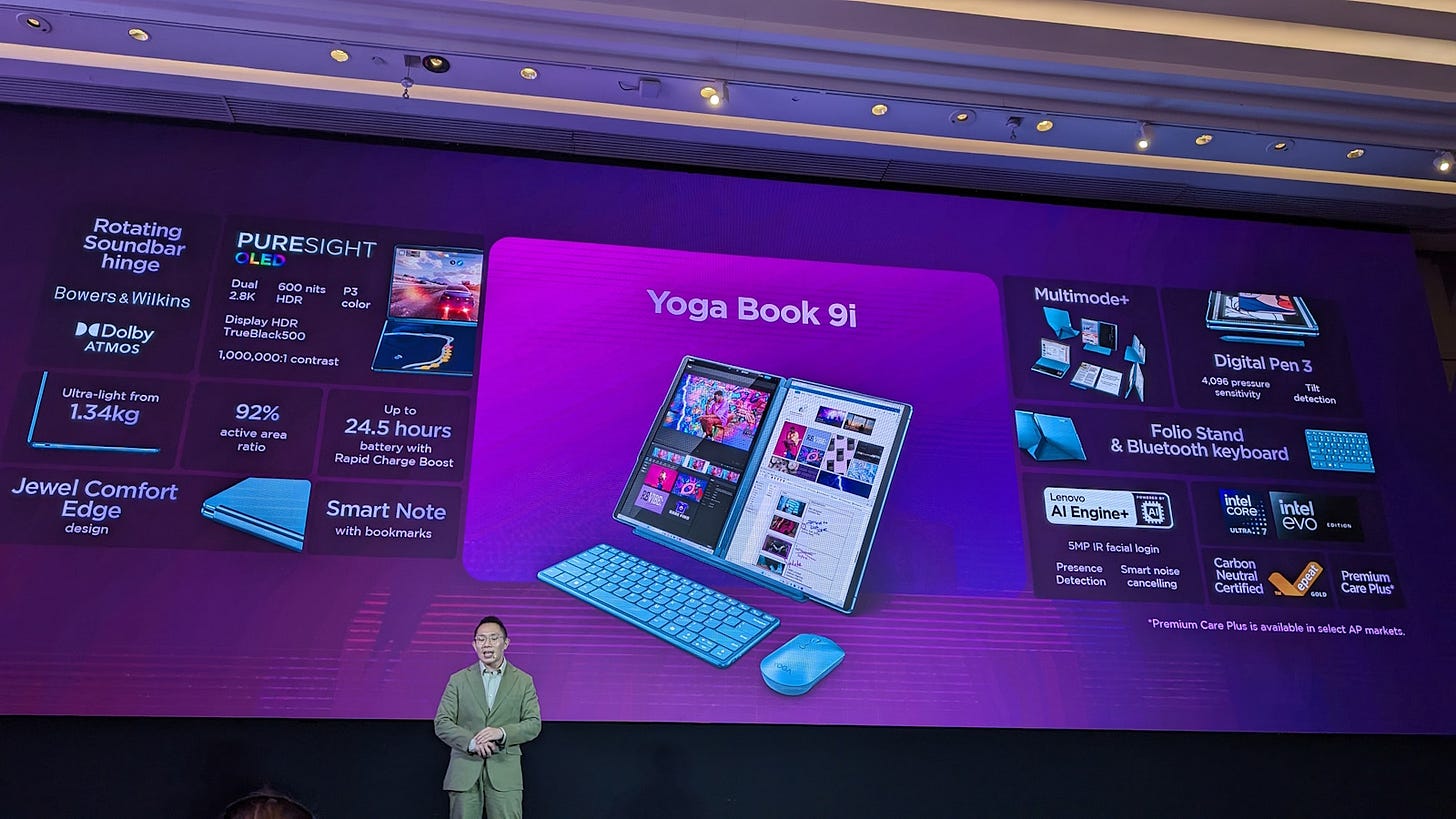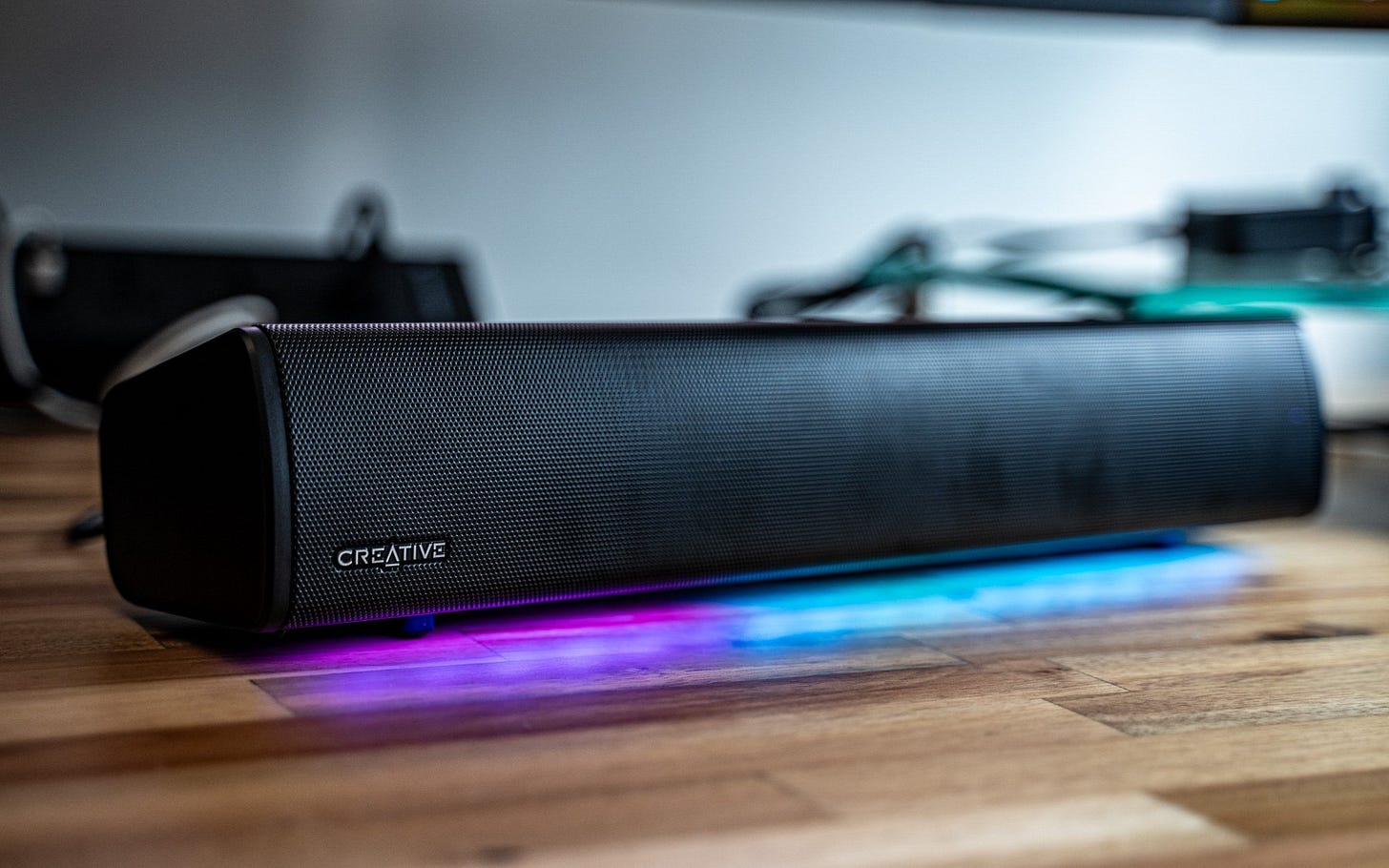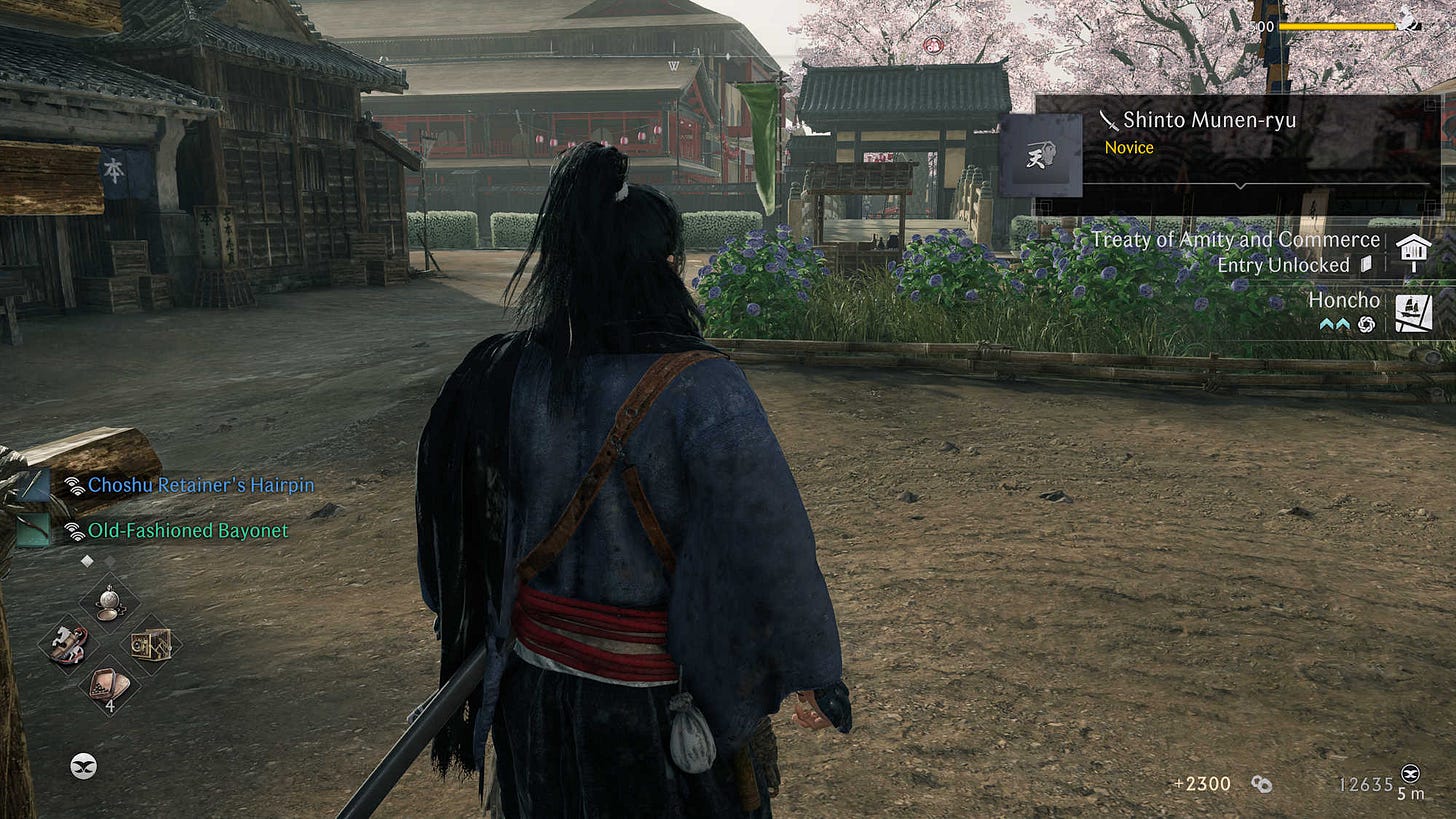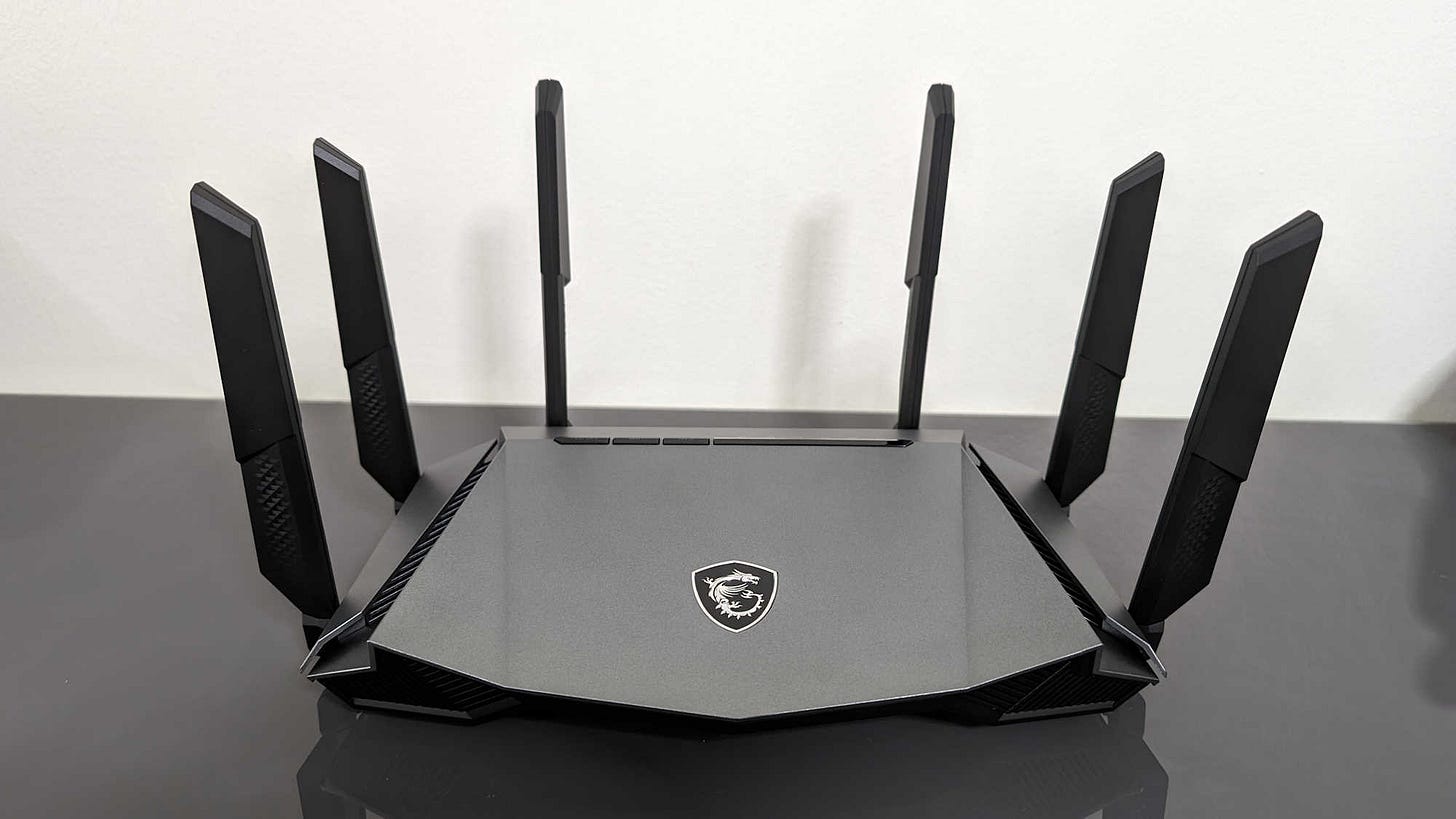Dual-screen laptops here to stay?
Dual-screen Lenovo Yoga Book 9i a "runaway success" in Asia Pacific
PC makers have experimented with dual-screen notebooks over the years without much success. But the most recent attempt, the Lenovo Yoga Book 9i, could carve its own niche this time round.
Lenovo recently launched the second-gen Yoga Book 9i. It kept the same design, including the origami-like folio stand that makes everything work. But the new version has been upgraded with Intel’s latest Core Ultra processor, just months after the Yoga Book 9i’s debut last August.
According to Mr Gregory Beh, category manager at Lenovo Asia Pacific, Consumer Business, PCs and Smart Device, this quick refresh is due to its great reception in the region. The Yoga Book 9i has been “a runaway success” for Lenovo, though he did not share any sales numbers. “We were selling units even without demo sets,” Mr Beh said. He added that customers had to wait six to eight weeks initially to get their hands on the product.
Mr Beh also revealed that Yoga Book 9i customers weren’t using the device like a typical notebook. Instead, they spent more time using both screens, with office productivity the key driver for the demand. While the hardware design is unchanged, the new Yoga Book 9i includes some software updates that add some interesting functionality. For example, you can wave your hand to flip a page in the included e-book reader app.
But the biggest endorsement of Lenovo’s work at making dual-screen laptops a reality is the fact that Asus, a competitor, launched a similar product this year. The Asus Zenbook Duo tweaks the design such that it works — without compromise, unlike the Yoga Book 9i — when used as a normal single-screen laptop. It will be interesting to see how this form factor will evolve with more players entering the market. Yes, dual-screen laptops will likely remain a niche category in the near future. But it now has a future.
This week, we tested Creative’s Sound Blaster GS3, a compact soundbar with bigger sound than it looks, Rise of the Ronin, Team Ninja’s samurai-themed venture into open-world games, and MSI’s first Wi-Fi 6 gaming router.
For those with limited desk space, Creative’s Sound Blaster GS3 offers larger sound —with pleasing highs and lows, and lots of detail and clarity — than you’d expect for its compact size. Its SuperWide technology also does a convincing job of expanding the soundstage for a more encompassing sound. Works with gaming consoles, laptops, PCs, and even phones.
For a first attempt at an open-world game, Rise of the Ronin is perfectly fine, even if it leans heavily into genre conventions. The presentation, though, isn’t quite up to the standards I expect from a Sony PlayStation 5 exclusive. Combat, and gameplay may make up for that — it’s especially accessible for a Team Ninja game. But I would be inclined to wait for a sale.
Despite making everything from laptops to monitors to graphics cards, MSI isn’t known for networking products. The RadiX AX6600 Wi-Fi 6 Gaming Router is a decent attempt. The interface, especially the web-based one, is snappy, while the app is serviceable. Performance and range, too, are decent, but not outstanding.





